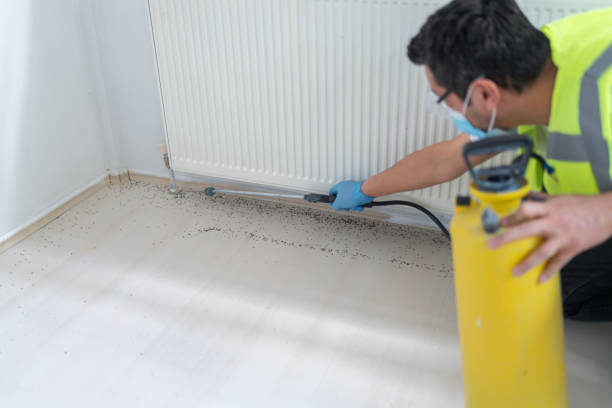When it comes to household pests, few are as quietly destructive as termites. Unlike ants or cockroaches that make their presence obvious, termites often work behind the scenes, slowly weakening the very structure of your home. By the time visible damage appears, the infestation may already be advanced. That’s why spotting the early signs can save you a significant amount of stress and money.
In this article, we’ll talk about the key clues to look out for, explain why termites are such a concern, and share tips on what to do if you suspect they’ve moved into your home.
Why Termites Are More Than Just a Nuisance
Termites aren’t like other pests that simply create a mess or an unpleasant smell. These tiny insects feed on cellulose—the main component of wood and plant materials. That means they literally eat away at the beams, floorboards, and furniture that make up your home.
According to industry studies, homeowners spend billions each year repairing termite-related damage. What’s worse is that most standard insurance policies don’t cover this kind of damage, considering it a maintenance issue rather than an accident. So, the responsibility of prevention and early detection falls squarely on the homeowner.
Think of it like maintaining your car: ignoring the early signs of engine trouble can lead to bigger repairs down the line. Similarly, ignoring the subtle warnings of termites can result in costly renovations.
Common Early Warning Signs of Termites
Spotting termites early isn’t always easy, but there are tell-tale signals you can watch for.
1. Hollow or Soft Timber
Tap gently on your wooden surfaces—such as door frames, skirting boards, or window sills. If the wood sounds hollow or feels soft when you press it, termites may already be eating away inside. In construction, timber is supposed to be solid and supportive, so any unusual softness is a red flag.
2. Mud Tubes
Termites are sensitive to light and dry conditions. To protect themselves, they build thin, tube-like tunnels out of mud. These mud tubes are often found climbing up walls, foundations, or even tree trunks near your house. They may look small and harmless, but they are highways for termites to travel safely between their nest and your home.
3. Discarded Wings
After swarming, termites shed their wings. You might find tiny piles of wings near windowsills, doors, or other light sources. They’re easy to mistake for small insect debris, but their presence suggests a colony is nearby.
4. Bubbling or Uneven Paint
If you notice paint on your walls starting to bubble or look uneven, termites may be tunneling just beneath the surface. Homeowners often mistake this for water damage, but in many cases, it’s the work of termites weakening the structure beneath.
5. Strange Clicking Sounds
Believe it or not, termites make noise. When disturbed, soldier termites bang their heads against tunnel walls, creating faint clicking sounds. If your home is unusually quiet, you may be able to hear this activity inside infested wood.
Real-World Scenarios
Imagine you’re a café owner with a rustic wooden interior. You start noticing some of the skirting boards flaking when swept. A closer inspection reveals hollow wood and mud tubes near the back entrance. If left unchecked, termites could compromise the safety of your space, affecting both your customers’ experience and your livelihood.
Or picture a family moving into their first home. A few months later, they discover discarded wings near the windows. They dismiss it at first, thinking it’s just another bug problem. By the time they call for help, significant structural repairs are needed. These examples highlight how termites don’t just affect aesthetics—they can disrupt businesses, dreams, and safety.
Taking Action Before It’s Too Late
So, what should you do if you notice these warning signs? The first step is not to panic but to act quickly. Attempting DIY termite control often doesn’t work, as these pests hide deep within walls and foundations. Professional expertise and specialized tools are usually necessary to eliminate them completely.
If you’re in Melbourne and suspect termites are lurking around your home, reaching out to experts like Zap It Pest Control can make all the difference. Trained professionals can accurately assess the extent of the infestation and apply safe, targeted treatments to protect your property before the damage escalates.
Prevention Is Better Than Cure
Even if you don’t see any obvious signs, it’s wise to take preventive measures. Regular inspections are essential, especially if your home has a lot of timber or is in an area known for termite activity. Keeping moisture away from foundations, repairing leaks promptly, and storing firewood a safe distance from the house can also reduce the risk.
For centuries, termites have played a role in natural ecosystems by breaking down dead wood, but in human homes, they become a costly problem. That’s why being proactive matters. Just as wood has been a critical building material throughout history, it remains just as vulnerable to these tiny but powerful insects today.
Final Thoughts
Termites may be small, but their impact on homes and businesses is massive. The key lies in spotting the early signs—whether it’s hollow timber, mud tubes, discarded wings, bubbling paint, or clicking sounds. By paying attention to these clues and acting promptly, you can avoid expensive repairs and unnecessary stress.
If you suspect an issue, don’t wait. Seek out professional help, protect your investment, and ensure your home remains the safe haven it was meant to be.


